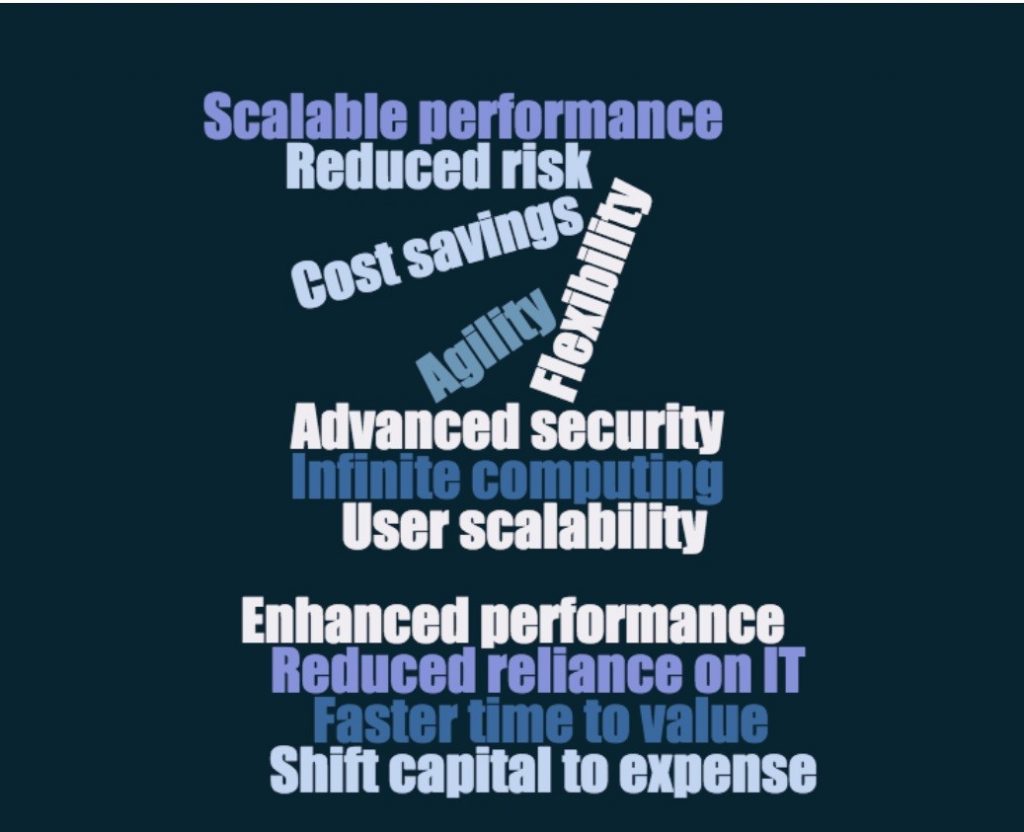The Cloud Offers Compelling Benefits To Startups, And Those That Want To Act Like Them

Companies of all sizes are moving to the cloud, taking advantage of a variety of benefits. Many companies initially investigate the cloud to save money. Others want to focus their precious resources on designing and delivering innovative products instead of developing and supporting IT infrastructure. Regardless of the initial goal that drives their investigation, they can achieve value across multiple dimensions.
Our research points to a number of important cloud benefits, including:
- Implementation advantages that allow them to be more agile, accessing the capabilities and computing power they need when they need it
- Operational advantages that allow them to improve performance and reduce IT resource needs
- Business advantages to lower cost and reduce risk
Startups choose cloud software because they can’t afford the time and overhead of traditional solutions. Larger companies are turning to the cloud for the same advantages – not because they have to, but because they want to be lean and agile like the startups that are aiming to take away their market share.
Benefits At The Intersection Of Cloud Software And Simulation

The cloud offers unique benefits for product innovation and engineering software. My recent discussion with Alec Clark of Joby Aviation and Jonathan Oakley of Dassault Systemes highlights some special advantages at the intersection of simulation and cloud computing. In our conversation, we take a look at the general benefits of the cloud mentioned above. Alec shares how Joby, as a startup, didn’t want to focus on IT. On the other hand, they needed to access the advanced engineering and simulation capabilities normally only available to larger companies. The cloud allowed them to meet both of these goals. In addition, we focused on some key areas where the cloud takes simulation to the next level, such as access to High Performance Computing, or “HPC.”
High Performance Computing
Simulation benefits from greater computing power. Simulation jobs are becoming increasingly more complex. Engineers want to optimize and validate more product characteristics, for example to address the complexity of autonomous vehicles. Jonathan mentions an example of simulating the tradeoffs and impacts between different design decisions, such as the impact of antenna placement on both signal interference and airflow. In addition, engineers are turning to approaches like generative design that demand rapid iteration and simulation.
As the demand for computational power grows, the cloud becomes even more attractive. Access to extensive hardware resources is one of the unique values the cloud has to offer, bringing old “time sharing” concepts to the next level and making them more accessible. The cloud allows companies to share nearly limitless computing power to meet their needs without investing in expensive equipment. Cloud providers can afford the latest technology, including specialized computing architecture like GPUs. These technologies are expensive and evolving rapidly, making them a strong candidate for a shared resource approach to share cost and ensure expensive power doesn’t sit idle.
The cloud makes high performance computing available to startups as well as engineers in larger companies that want the agility to take advantage of cloud performance. It also allows them to access it without having to wait for budget approvals or available resources so they can move quickly. This gives them the power that would typically be beyond their reach.
The Cloud Improves Simulation As Part Of A Platform Approach
Product innovation platforms connect engineers with simulation tools without having to email and translate files, saving time and preventing errors. They not only give analysts the specialty capabilities they need, but also create a cohesive digital thread throughout the innovation process by bringing simulation into the engineering workflow. Today, all of this is available on the cloud.
As Alec explains, Joby was lucky to be a startup as cloud solutions came online because it gave them access to greater capabilities. He shares that it allowed them, as a startup company, to be agile and fast and compete with the big guys. At the same time, it allows larger companies to move more quickly to gain the capabilities and performance they need to protect themselves from industry disruption. Regardless of size, it’s a good time to take a look at a cloud innovation platform for general cloud advantages, to take simulation to the next level, and gain other cloud advantages unique to product innovation and engineering (see graphic).

Learn More
Watch the full webcast panel here from Jim Brown, President of Tech-Clarity as he hosts guests from Dassault Systèmes and Joby Aviation, an American venture-backed aerospace company.This panel video focuses on the benefits of high-performance computing simulation on the cloud, and the transformation of design in the Aerospace & Defense Industry.
Want to know more? Read, What do startups know about innovation on the cloud? to learn how large enterprises can gain the advantages and agility of a startup using the 3DEXPERIENCE on the cloud.